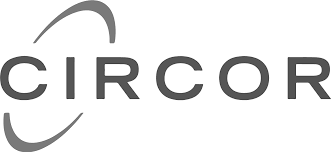Understanding Your Value Proposition
1. What Do We Sell?
While many businesses focus on listing the benefits of their products or services, high-performing sales organizations develop clear, compelling value propositions. These statements go beyond features to highlight the unique value and customer experience delivered by the offering.
2. Who Is the Customer?
Successful companies not only segment customers but also create detailed Ideal Customer Profiles. These profiles define the perfect customer who benefits most from the value proposition, allowing businesses to target marketing and sales efforts effectively.
3. How Do We Sell?
Identifying where to find prospects matching the ideal customer profile and outlining engagement strategies to convert them is the foundation for effective sales planning.

The Role of a Strong Value Proposition in Sales Success
Your value proposition acts as the cornerstone of your sales strategy. It clearly communicates the unique benefits and total experience you offer. This includes product features, service quality, reliability, convenience, guarantees, and emotional connections.
An effective value proposition should be:
- Clear and concise: Use simple language your target audience understands.
- Customer-focused: Emphasize how your offering improves their lives or businesses.
- Unique: Highlight what sets you apart from competitors.
By delivering this clarity, you build trust and open doors for stronger customer engagement.
Developing Your Sales Strategy Plan
Step 1: Define Your Core Customer Base
Begin by identifying your ideal customer, the segment most aligned with your value proposition. These customers typically show:
- Higher profitability and lifetime value
- Lower price sensitivity
- Strong loyalty and retention potential
Focusing on your core customers helps optimize resource allocation and tailor your message for maximum impact.
Step 2: Create Customer Profiles and Segmentation
Break down your customer base into meaningful segments based on demographics, behavior, needs, and preferences. This segmentation guides targeted marketing and personalized sales approaches.
Step 3: Develop a Lead Generation and Engagement System
With your value proposition and ideal customers defined, build a structured sales process that includes:
- Lead generation: Identify channels where your ideal customers spend time (social media platforms, industry events, online groups, etc.)
- CRM utilization: Use customer relationship management tools to track interactions, manage leads, and personalize outreach.
- Sales tactics and conversion: Engage prospects with tailored messaging that aligns with your value proposition, addressing their pain points and motivations.
Key Questions to Answer in Your Sales Process
- Where and how can we reach prospects fitting our ideal customer profile?
- How do we communicate the value proposition effectively to engage them?
- What are the best tactics to convert prospects into loyal customers?
Industry-Specific Value Proposition Examples
Technology Sector
- Offer streamlined, user-friendly solutions that enhance productivity and reduce downtime.
- Focus on cutting-edge innovation combined with reliable customer support.
Retail/E-commerce
- Highlight convenience, fast shipping, personalized shopping experiences, and hassle-free returns.
- Emphasize quality, variety, and unique product selections.
Professional Services
- Stress expertise, trustworthiness, customized solutions, and measurable results.
- Promote strong client relationships and transparent communication.
Practical Tools for Developing Your Value Proposition and Sales Strategy Plan
Value Proposition Canvas Template
| Customer Segment | Value Proposition |
|---|---|
| Needs & Pain Points | How We Solve Them |
| Demographics & Behaviors | Key Benefits & Experiences |
| Preferred Channels | Unique Differentiators |
Example Use: Fill out customer needs and map how your offering addresses each one. Use this to craft targeted messaging and identify best channels for outreach.
Sales Strategy Action Plan Checklist
- Define clear and unique value proposition.
- Develop detailed Ideal Customer Profiles.
- Segment customers for targeted marketing.
- Map customer journey and touchpoints.
- Identify lead generation channels.
- Implement CRM for lead and customer management.
- Create tailored messaging aligned with value proposition.
- Establish metrics and KPIs for monitoring sales performance.
Next Steps to Accelerate Sales Growth
Having a solid value proposition and a structured sales strategy plan lays the groundwork for sustainable revenue growth and market differentiation. To further enhance your sales processes, tools like Sales Conversion Strategy Pack offer actionable frameworks and templates to optimize conversion and retention.
Additionally, explore complementary resources such as Customer Retention and Loyalty Strategy Pack and Marketing Promotion Strategy Pack to build a cohesive growth strategy across marketing and sales.






























